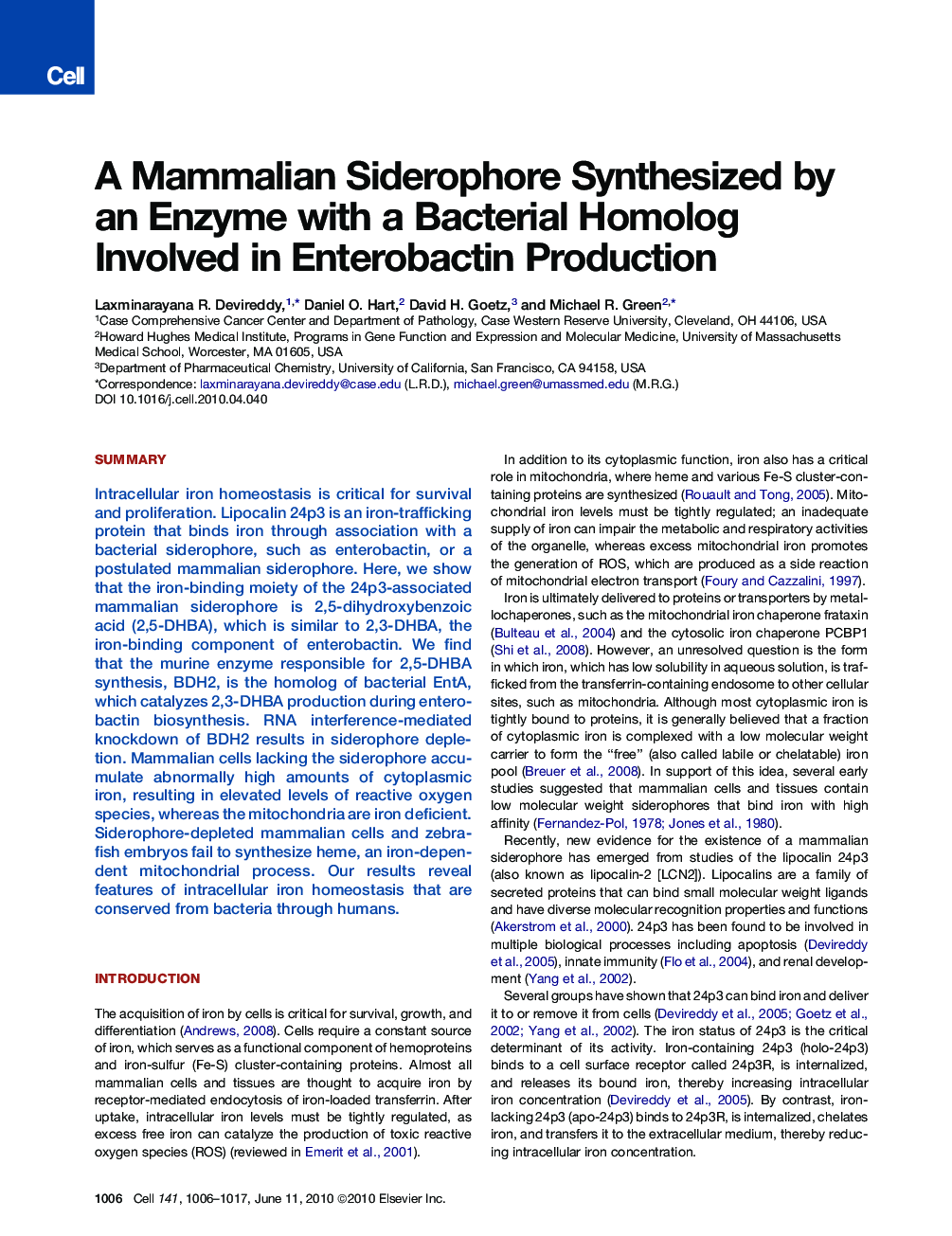| Article ID | Journal | Published Year | Pages | File Type |
|---|---|---|---|---|
| 2036349 | Cell | 2010 | 12 Pages |
SummaryIntracellular iron homeostasis is critical for survival and proliferation. Lipocalin 24p3 is an iron-trafficking protein that binds iron through association with a bacterial siderophore, such as enterobactin, or a postulated mammalian siderophore. Here, we show that the iron-binding moiety of the 24p3-associated mammalian siderophore is 2,5-dihydroxybenzoic acid (2,5-DHBA), which is similar to 2,3-DHBA, the iron-binding component of enterobactin. We find that the murine enzyme responsible for 2,5-DHBA synthesis, BDH2, is the homolog of bacterial EntA, which catalyzes 2,3-DHBA production during enterobactin biosynthesis. RNA interference-mediated knockdown of BDH2 results in siderophore depletion. Mammalian cells lacking the siderophore accumulate abnormally high amounts of cytoplasmic iron, resulting in elevated levels of reactive oxygen species, whereas the mitochondria are iron deficient. Siderophore-depleted mammalian cells and zebrafish embryos fail to synthesize heme, an iron-dependent mitochondrial process. Our results reveal features of intracellular iron homeostasis that are conserved from bacteria through humans.
Graphical AbstractFigure optionsDownload full-size imageDownload high-quality image (306 K)Download as PowerPoint slideHighlights► The iron-binding moiety of the mammalian siderophore is 2,5-DHBA ► The mouse enzyme responsible for 2,5-DHBA synthesis is homologous to bacterial EntA ► Mammalian cells lacking the siderophore accumulate high amounts of cytoplasmic iron ► Iron is imported into mitochondria as an iron-siderophore complex
